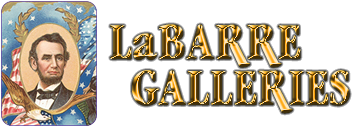Delaware, Lackawanna and Western Railroad Co. Secretarial Signed by James Stillman - 1861-1873 dated Uncut Pair of Transfer Receipts
Inv# AG2048C StockPennsylvania
Uncut Sheet of 2 Transfer Receipts with 1 secretarial signed by James Stillman. Most likely Stillman's lawyer.

James Jewett Stillman (June 9, 1850 – March 15, 1918) was a prominent American entrepreneur who made significant investments in land, banking, and railroads across New York, Texas, and Mexico. He served as the chairman of the board of directors for the National City Bank. Through strategic partnerships with influential entities such as the Rockefeller family, Standard Oil, and Kuhn, Loeb & Co., he established a foundation that arguably positioned the bank as "the greatest bank in the Western Hemisphere." His aggressive expansion strategy led National City to become the largest bank in the United States by 1894, pioneering the opening of foreign branches and excelling in foreign exchange services. By 1902, the bank had the capability to transfer any amount of money to any city worldwide within a 24-hour timeframe. At the time of his passing, his net worth was estimated at approximately $77 million, making him one of the wealthiest individuals in the nation.
The Delaware, Lackawanna and Western Railroad, commonly referred to as the DL&W or Lackawanna Railroad, was a Class 1 railroad in the United States that established a connection between Buffalo, New York, and Hoboken, New Jersey, with a ferry service to New York City, covering a total distance of 395 miles (636 km). Incorporated in Pennsylvania in 1853, the railroad was primarily designed to facilitate the transportation of anthracite coal from the Coal Region in Northeast Pennsylvania to significant coal markets in New York City. Over time, the railroad expanded its reach both eastward and westward, ultimately linking Buffalo with New York City. Similar to other coal-centric railroads in Northeastern Pennsylvania, such as the Lehigh Valley Railroad, New York, Ontario and Western Railroad, and the Lehigh & New England Railroad, the DL&W experienced profitability during the early to mid-20th century. However, its financial performance began to decline due to a reduction in coal traffic from Pennsylvania, particularly after the 1959 Knox Mine Disaster, as well as increased competition from trucking services following the development of the Interstate Highway System in the 1960s and 1970s. In 1960, the DL&W merged with its competitor, the Erie Railroad, to create the Erie Lackawanna Railroad, which was subsequently acquired by Conrail in 1976.
A stock certificate is issued by businesses, usually companies. A stock is part of the permanent finance of a business. Normally, they are never repaid, and the investor can recover his/her money only by selling to another investor. Most stocks, or also called shares, earn dividends, at the business's discretion, depending on how well it has traded. A stockholder or shareholder is a part-owner of the business that issued the stock certificates.











Ebay ID: labarre_galleries